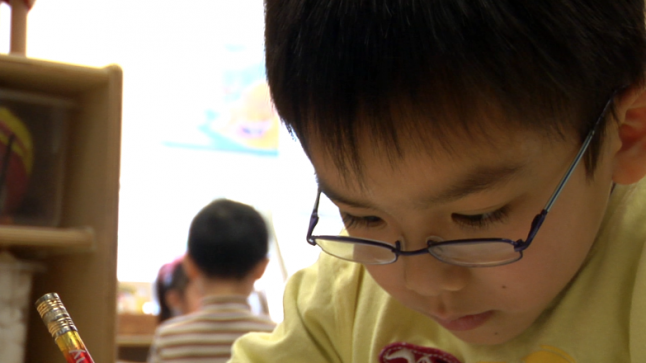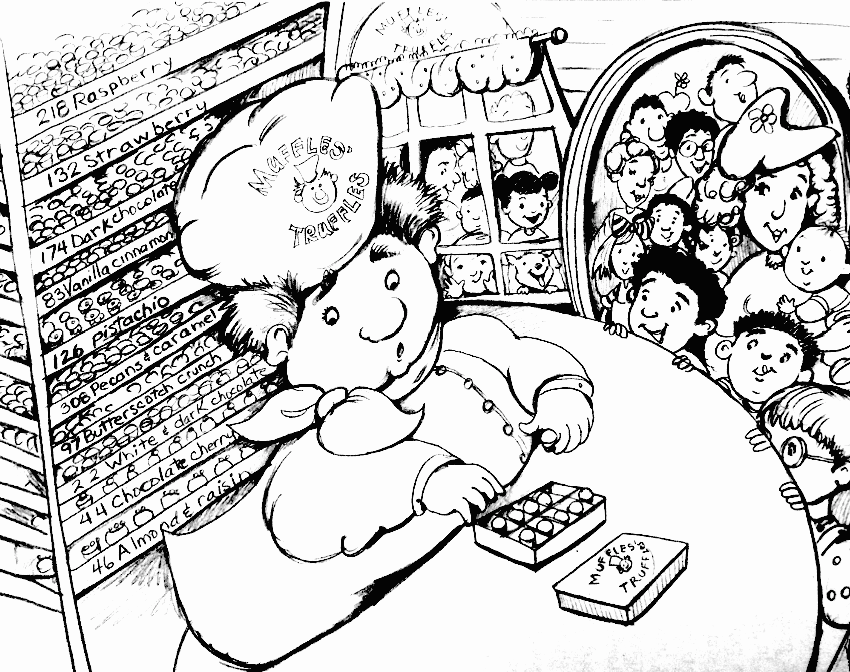Series: Ideas at Work
Math Investigations: A Fresh Lead in Creative Math Learning

Teachers in the Innovations Project have been making use of the Contexts for Learning Investigations, a series of mini-lessons, games, and storybooks based around overarching math learning goals.
The developers of this series argue that math should not be viewed as a history lesson, teaching formulas and concepts that mathematicians “invented” centuries ago. Instead, math time should be an active and even creative process, allowing students to learn through experimentation and exploration. (Go to Contexts for Learning on Heinemann’s website for previous units or New Perspectives on Learning for newer units.)
At Brentano Math & Science Academy, one of the Innovations Project sister schools, third grade teacher Sharon Vinh has been using the Contexts for Learning series extensively in her class. She says that one of this learning tool’s major strengths is its ability to tie math back into real-world settings.
Image © Heinemann
“Although many of Vinh’s students have the times tables memorized, some were having trouble applying that knowledge, particularly when working on problems involving multiplying larger numbers. One of the books in the series, Muffles’ Truffles, tackles this idea by using it as the central conflict in the story: a candy maker with a booming business needs to determine how many candy boxes of various sizes to buy.
“Putting a story and visual aspect into the concept helped make the idea more concrete and real for my students,” says Vinh.
Contexts for Learning Investigations also stresses the importance of flexibility. A number of K-3 teachers at Lorca Elementary, another Innovations sister school, have also begun to implement the series in their classes.
“First- and second-grade teachers shared that they could identify students who came from classrooms that did Investigations,” says Katie Morgan, a coach working with Lorca teachers. “A major telling point was that these students were demonstrating that they could use multiple different methods to solve a single problem.”
Putting a story and visual aspect into the concept helped make the idea more concrete and real for students.
In Vinh’s classroom, a “Math Congress” is held at the end of a unit, in which groups of students discuss the strategies they used to solve the problems. Vinh arranges the groups based on the strategy each student used, with the intention of illuminating the most efficient solution strategy for everyone.
“It is never forced upon students which approach they must use,” Vinh stresses. “It is up to each student to decide which strategy they are the most comfortable with.” This lets students at varying levels collaborate on the same problems while continuing to learn at their own rate.
A major telling point was that these students were demonstrating that they could use multiple different methods to solve a single problem.
Learning math in this open-ended, exploratory manner has a number of benefits for students. Rather than simply drilling math facts, students will garner a more complete conceptual understanding. This will come in handy as various ideas expand and build off of one another in later years.
Investigative learning also removes the usual classroom hierarchy of student and teacher. Students will take an increasingly active role in unpacking various concepts for themselves.
“The teacher is there to help students organize their work and to connect it back to the traditional way of writing it,” Vinh says. She also further described how students discover strategies on their own or with each other. “They have become their own math critics and are constantly looking for ways they can improve.”
